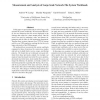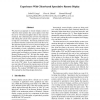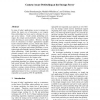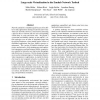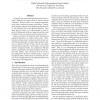108
click to vote
USENIX
2008
15 years 2 months ago
2008
In this paper we present the analysis of two large-scale network file system workloads. We measured CIFS traffic for two enterprise-class file servers deployed in the NetApp data ...
104
click to vote
USENIX
2008
15 years 2 months ago
2008
A virtual cluster is a promising technology for reducing management costs and improving capacity utilization in datacenters and computer centers. However, recent cluster virtualiz...
100
click to vote
USENIX
2008
15 years 2 months ago
2008
Large-scale parallel dataflow systems, e.g., Dryad and Map-Reduce, have attracted significant attention recently. High-level dataflow languages such as Pig Latin and Sawzall are b...
89
Voted
USENIX
2008
15 years 2 months ago
2008
We propose an approach to remote display systems in which the client predicts the screen update events that the server will send and applies them to the screen immediately, thus e...
90
Voted
USENIX
2008
15 years 2 months ago
2008
The performance of receive side TCP processing has traditionally been dominated by the cost of the `per-byte' operations, such as data copying and checksumming. We show that ...
101
Voted
USENIX
2008
15 years 2 months ago
2008
In many of today's applications, access to storage constitutes the major cost of processing a user request. Data prefetching has been used to alleviate the storage access lat...
90
Voted
USENIX
2008
15 years 2 months ago
2008
Unexpected surges in Web request traffic can exercise server-side resources (e.g., access bandwidth, processing, storage etc.) in undesirable ways. Administrators today do not hav...
100
Voted
USENIX
2008
15 years 2 months ago
2008
Network emulation is valuable largely because of its ability to study applications running on real hosts and "somewhat real" networks. However, conservatively allocating...
USENIX
2008
15 years 2 months ago
2008
Aggressive energy conserving mechanisms can maximize energy efficiency, but often have the negative tradeoff of simultaneously reducing system responsiveness due to the switching ...
109
Voted
USENIX
2008
15 years 2 months ago
2008
Evaluating novel networked protocols and services requires subjecting the target system to realistic Internet conditions. However, there is no common understanding of what is requ...
